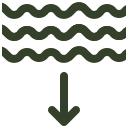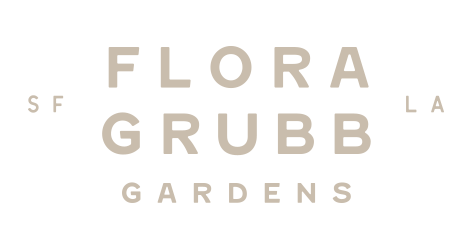Archontophoenix cunninghamiana ‘Inge’s Hardy’
Inge’s hardy king palm
King palm selection introduced by Inge Hoffmann. May be more cold hardy. Parent tree survived 1990 freeze (24F) in East Bay Area. Clean ringed trunk. Avoid wind.
 |
height |
20–30ft |
 |
width |
10–15ft |
 |
tolerates |
Cold, Moist Soil, Narrow Planting |
 |
water
needs |
Moderate – High |
 |
water
info |
This palm appreciates consistent water, but won’t tolerate soggy soil. Once it’s established, be sure to water it when the top inch or two of the soil is dry. Usually this will mean watering deeply every five to seven days during the dry season. Planting this palm with good drainage will help to make sure it doesn’t accidentally get overwatered. |
 |
hardy
to |
24F |
 |
exposure |
Full Shade – Full Sun |
 |
indoor
outdoor |
Outdoor |
 |
drainage |
In Ground: Cactus Mix, In Pots: Cactus Mix, In Pots: Potting Soil, Tolerates Heavy Soil, Tolerates Sandy Soil |
 |
fertilizing |
All Purpose, Palm Fertilizer |
 |
origin |
NE Australia |
 |
california
native |
No |
 |
sunset
zones |
15–17, 19–24 |
OUTDOOR EXPOSURE GUIDE

Full Sun
Six or more hours of sun beams directly landing on the plant's leaves.
Part Shade
Three to five hours of sun beams directly landing on the plant's leaves.
Part Sun
One to two hours of sun beams directly landing on the plants leaves.
Full Shade
The plant is never fully lit by sun beams,
but is in a bright spot or has dappled sunbeams playing over the leaves throughout the day.
Deep Shade
The plant never has dappled light on the leaves, and is in a place that feels dim, even on a nice sunny day.
SUNSET ZONES MAP

Growing Notes
Be gentle with the roots of this species; it will sulk or even die if roots are damaged in planting. Do not manipulate the rootball.
While this palm is solitary, there will often be multiple palms planted per pot. Palms in multiple plantings gracefully arch apart from each other over time. This palm also looks amazing planted in larger groupings of many individuals.
Though this palm tolerates shade, it performs best in sun and in the Bay Area most gardeners don’t push it beyond part sun.
In the Bay Area, where humidities are high and temps cool (especially in foggy areas) we occasionally see pink rot (Phytophthora erythroseptica) in the crown of king palms. This presents as a dusty pale pink patch in the crown of the palm or on the leaves (sometimes where old leaves were pruned.) Some say a dusting of cinnamon will be enough to kill off the fungus, but we recommend treating with copper fungicide. If left untreated and this fungus damages the youngest leaf spike it can potentially kill your palm, so be sure to treat any fungus early.
The king palm is intolerant of very low humidity and also wind.
While we typically think of this palm’s hardiness just below a hard frost, the mother of this selection survived temperatures into the low twenties in 1990; leaves died back but regrew and aesthetic damage remains on the trunk.
Adaptable to heavier soils, but prefers loamy well drained soil.
This palm will grow well in part sun when young, but wants to bust out into a sunny canopy as it matures.
Special Interest
Inge Hoffmann, who ran the seed bank of the International Palm Society, collected this palm variety in a highland area of northeast Queensland, far from its normal range in Australia. Alone among king palms in her San Leandro (Bay Area) garden, this selection survived the notorious 1990 freeze. We hope its progeny will be a little more cold-hardy than other king palms.
Historically, aboriginal peoples of Eastern Australia crafted this palm’s leaves into a water tight basket called a bangalow, leading to this palm’s Australian common name - the bangalow palm.
More Info
The flowers and fruit are showy and attractive features of this tidy palm.

